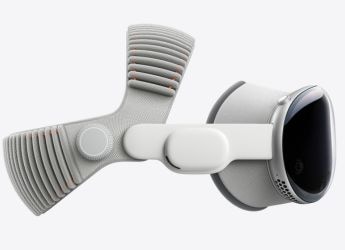- Home
- Cameras
- Cameras News
- India May Soon Replace Weather Balloons Sensors With Drones to Collect Atmospheric Data
India May Soon Replace Weather Balloons Sensors With Drones to Collect Atmospheric Data
Drones have an advantage over weather balloons as they can be controlled, guided to fly at low and high altitudes.

Photo Credit: Reuters
Drones will be used gather atmospheric data which is crucial for weather forecasting
India is set to deploy drones to gather atmospheric data that is currently collated by sending sensors through weather balloons released from at least 550 locations across the country twice every day. The sensors embedded in a radiosonde, which is a telemetry instrument carried by a weather balloon, record atmospheric pressure, temperature, wind direction and speed as the hydrogen-filled weather balloon soars up to 12km height and transmit data to the ground receiver through radio signals.
However, weather balloons and radiosondes are unretrievable as they drift afar from weather stations that release them in the atmosphere.
“We are now exploring the possibility of using drones to gather this atmospheric data which is crucial for weather forecasting,” M Ravichandran, Secretary, Ministry of Earth Sciences, told PTI.
Various studies have suggested that specialised drones equipped with sensors to gather weather data could be an efficient successor to the traditional weather balloons.
The India Meteorological Department (IMD) gathers weather data from 550 locations across the country through weather stations and uses radiosonde observations which are then fed into forecasting models to issue weather forecasts.
The drones have a key advantage over weather balloons as they can be controlled and guided to fly at low as well as high altitudes. The IMD plans to use drones to gather data from up to five km altitude and compare it with data gathered using the traditional weather balloons.
It has invited industry and academia to join the demonstration of the capability of drone technology for weather observations.
“It is expected that drones should be capable, economically feasible, easily deployable and recoverable and should be technically comparable or superior to currently deployed radiosondes for upper air observations up to the boundary layer of upper air atmosphere,” the weather office said.
While the flight of a weather balloon usually lasts for up to two hours, the IMD expects to gather data using drones during a 40-minute flight.
If successful, a key benefit would be reducing the wastage of radiosondes as the IMD loses more than 100 such instruments every day as weather balloons cannot be retrieved after their flight.
Catch the latest from the Consumer Electronics Show on Gadgets 360, at our CES 2026 hub.
Related Stories
- Samsung Galaxy Unpacked 2025
- ChatGPT
- Redmi Note 14 Pro+
- iPhone 16
- Apple Vision Pro
- Oneplus 12
- OnePlus Nord CE 3 Lite 5G
- iPhone 13
- Xiaomi 14 Pro
- Oppo Find N3
- Tecno Spark Go (2023)
- Realme V30
- Best Phones Under 25000
- Samsung Galaxy S24 Series
- Cryptocurrency
- iQoo 12
- Samsung Galaxy S24 Ultra
- Giottus
- Samsung Galaxy Z Flip 5
- Apple 'Scary Fast'
- Housefull 5
- GoPro Hero 12 Black Review
- Invincible Season 2
- JioGlass
- HD Ready TV
- Laptop Under 50000
- Smartwatch Under 10000
- Latest Mobile Phones
- Compare Phones
- OPPO Reno 15 Pro Max
- Honor Win RT
- Honor Win
- Xiaomi 17 Ultra Leica Edition
- Xiaomi 17 Ultra
- Huawei Nova 15
- Huawei Nova 15 Pro
- Huawei Nova 15 Ultra
- Asus ProArt P16
- MacBook Pro 14-inch (M5, 2025)
- OPPO Pad Air 5
- Huawei MatePad 11.5 (2026)
- Xiaomi Watch 5
- Huawei Watch 10th Anniversary Edition
- Acerpure Nitro Z Series 100-inch QLED TV
- Samsung 43 Inch LED Ultra HD (4K) Smart TV (UA43UE81AFULXL)
- Asus ROG Ally
- Nintendo Switch Lite
- Haier 1.6 Ton 5 Star Inverter Split AC (HSU19G-MZAID5BN-INV)
- Haier 1.6 Ton 5 Star Inverter Split AC (HSU19G-MZAIM5BN-INV)
-
 Honor Power 2 AnTuTu Benchmark Score, Colourways Teased Ahead of January 5 China Launch
Honor Power 2 AnTuTu Benchmark Score, Colourways Teased Ahead of January 5 China Launch
-
 Instagram Will Have to Evolve Fast, Warns Adam Mosseri Amid Rise of AI Content
Instagram Will Have to Evolve Fast, Warns Adam Mosseri Amid Rise of AI Content
-
 Apple Vision Pro Production, Marketing Said to be Scaled Back Due to Low Sales
Apple Vision Pro Production, Marketing Said to be Scaled Back Due to Low Sales
-
 Perplexity CEO Aravind Srinivas Says On-Device AI Can Disrupt the Data Centre Industry
Perplexity CEO Aravind Srinivas Says On-Device AI Can Disrupt the Data Centre Industry












